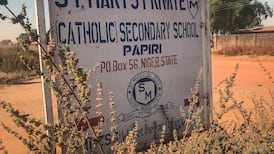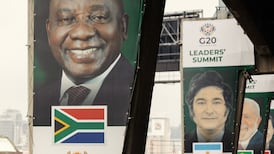The protests against hosting the 2014 Fifa World Cup in Brazil have prompted a renewed bout of reflection in South Africa in recent weeks, about the legacy of this country's experience four years ago.
With the benefit of hindsight, South Africans are asking themselves whether the tournament – the first World Cup to be held on African soil – was a triumph for the continent, a poisoned chalice or a combination of both.
In the years leading up to the 2010 competition, critics expressed concerns about the government spending hundreds of millions of euro to hold such an extravagant event when poverty is rampant and social expenditure is a huge priority for the state.
These same concerns have been repeatedly expressed by thousands of Brazilians over the past few years, so it would seem apt to dissect the South African post-World Cup experience.
As in the case of Brazil, where the local cost of hosting the Fifa tournament has ballooned to €8.12 billion, the price of getting everything ready for the event in South Africa also far exceed the original price tag.
About €2.5 billion of taxpayers’ money was spent on new stadiums, renovating airports, upgrading roads, and the continent’s first high-speed public railway, locally called the Gautrain.
The tournament itself was considered an overwhelming success for Fifa from a footballing and financial point of view, but the impression that South Africans did not get any real tangible benefits is hard to shake for some.
The government maintains that, apart from the immediate optimism and sense of togetherness the event generated and the positive rebranding the country received, it would take time for more tangible benefits to trickle down and affect ordinary South Africans.
Four years on and those benefits in terms of the infrastructure and stadiums have yet to materialise. Of the 10 stadiums built from scratch or refurbished to the tune of about €685 million, nine are in the red, unable to attract enough events to pay their way.
Upkeep bill
The annual multimillion-euro bill for their upkeep falls on the cash-strapped municipalities in which they are located, a salutary word of warning for Brazil, if ever there was one. The Gautrain is priced out of the reach of most South Africans and basically services the middle class. So do South Africa’s upgraded airports. In addition, a controversial new electronic tolling system means drivers are still paying for upgrades to the motorways.
In their final report on the 2010 tournament, Fifa and the South African Football Association urged people to consider the "non-tangible" benefits the tournament would bring – such as an improved national team and a chance to showcase the country's tourism potential.
Danny Jordaan, the man who headed South Africa's 2010 organising committee, recently gave an interview about the legacy of the tournament, saying organisers were clear about what they wanted to achieve. "Africa is now a place for business, trade and investment. And this is what we want. But you have to break through the negative perceptions first," he said.
If an increase in tourism is a reflection of that, then that goal may well have been achieved. South Africa’s tourism numbers have boomed since the tournament, improving every year bar 2011, and according to government statistics they fell just short of 15 million visitors last year.
Global exposure
However, it remains unclear whether this was down to the country’s global exposure through the World Cup, or to the steep slide in the value of the national currency, which has lost nearly half its value since 2010.
The sporting benefits South Africa has gained over the past four years are also debatable.
The national soccer team, Bafana Bafana, failed to qualify for the Brazil tournament and is 65th in the world rankings, having slid from a short-lived post-World Cup high of 38th in 2011. None of the under-23 and under-21 football teams have fared any better over the same period.
But there are signs the 450 million rand Fifa paid into the World Cup Legacy Trust – the post-tournament soccer development fund – in 2012 is starting to reap benefits at the grass roots level of sport.
A national database that will track all of South Africa’s two million registered footballers will go live next month. SAFA has also established country-wide under-13 and under-15 leagues for boys and girls and says it plans to train 10,000 coaches a year.
Unfortunately, though, when you look at the legacy of the Word Cup holistically, it is difficult not to feel it mirrors the South African economy – very unequal and primarily benefiting the middle classes.












